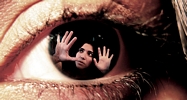|
|
 Acne (1,500) Acne (1,500)
 Addictions (1,500) Addictions (1,500)
 Advice (1,500) Advice (1,500)
 Allergies (1,092) Allergies (1,092)
 Alternative Medicine (1,500) Alternative Medicine (1,500)
 Anti Aging (1,500) Anti Aging (1,500)
 Breakup (1,500) Breakup (1,500)
 Cancer (1,499) Cancer (1,499)
 Dental Care (1,500) Dental Care (1,500)
 Disabilities (1,500) Disabilities (1,500)
 Divorce (1,500) Divorce (1,500)
 Elderly Care (1,498) Elderly Care (1,498)
 Goal Setting (1,500) Goal Setting (1,500)
 Hair Loss (1,500) Hair Loss (1,500)
 Health and Safety (1,497) Health and Safety (1,497)
 Hearing (1,500) Hearing (1,500)
 Law of Attraction (1,499) Law of Attraction (1,499)
 Marriage (1,500) Marriage (1,500)
 Medicine (1,497) Medicine (1,497)
 Meditation (1,499) Meditation (1,499)
 Men's Health (1,500) Men's Health (1,500)
 Mental Health (1,500) Mental Health (1,500)
 Motivational (1,500) Motivational (1,500)
 Nutrition (1,495) Nutrition (1,495)
 Personal Injury (1,499) Personal Injury (1,499)
 Plastic Surgeries (1,500) Plastic Surgeries (1,500)
 Pregnancy (1,496) Pregnancy (1,496)
 Psychology (1,500) Psychology (1,500)
 Public Speaking (1,500) Public Speaking (1,500)
 Quit Smoking (1,500) Quit Smoking (1,500)
 Religion (1,499) Religion (1,499)
 Self Help (1,500) Self Help (1,500)
 Skin Care (1,500) Skin Care (1,500)
 Sleep (1,500) Sleep (1,500)
 Stress Management (1,500) Stress Management (1,500)
 Teenagers (1,492) Teenagers (1,492)
 Time Management (1,500) Time Management (1,500)
 Weddings (1,500) Weddings (1,500)
 Wellness (1,500) Wellness (1,500)
 Women's Health (1,500) Women's Health (1,500)
 Women's Issues (1,500) Women's Issues (1,500)
|
Self-harm addiction, also known as self-mutilation, usually refers to the act of cutting and burning oneself and is an addiction that is widely misunderstood. Many often believe that a self-harmer is attempting to commit suicide due to the serious nature of the wounds and cuts inflicted. When a person is a self-harmer, they engage in obsessive and compulsive behaviours involving inflicting physical damage to their bodies in a quest to avoid feelings with which they are unable to cope or do not know how to process. Others may see a self-mutilator as an attention seeker which is simply not true.
What is self-harming?
Self-harming can include cutting, burning with cigarette lighters, cigarettes and other hot implements, and general acts of bodily harm such as hitting one’s head against a wall repeatedly. The self-mutilation can be so severe that the sufferer may need medical treatment and hospitalisation.
The results leave permanent scars on the body, which the sufferer may be proud of when immersed in their addiction, yet will also cause deep shame of their behaviour resulting in their hiding the evidence from others.
Who suffers from it?
Many people suffer from the addiction concerned with self-harm. The condition does not discriminate race, gender, culture or creed although young women seem to suffer most commonly from these addictive behaviours. Self-harm is often accompanied by other addictive tendencies, especially eating disorders and drug addiction, but anyone can suffer from the problem.
Self-harm is a disease - just like drug addiction and alcoholism, the sufferer has an incurable and progressive disease which can be arrested and managed through therapy and treatment. The act of harming one’s body is not really the problem when self-mutilation is involved. Whilst the behaviour is the addiction, the problem lies in the person: their behaviour is a symptom of the disease.
If a person is addicted to the obsessive and compulsive behaviours related to self-harming, the person is generally secretive about their behaviour. Fear of being stopped or confronted results in the hiding of their actions.
Many sufferers report their behaviour involving self-harm as ‘ritualistic’, just as with drug addicts and alcoholics. For example, a person who uses razors to cut themselves may have a strict routine that they follow, which could include getting a special and ‘safe place’ ready for their self-harm to be carried out in ‘peace’ without disturbance. The implements used, the method of harming and the aftermath may follow a very similar pattern each time. The location of self-harm infliction on their bodies may be in one place, such as the arms, thighs, stomach and sometimes even the face.
How does a person self-harm?
The process of self-harming generally involves the sufferer experiencing some sort of an emotion, such as rejection and the resulting self-hatred, and following this, a desperate need to ‘cleanse’ themselves of the unbearable feelings.
The sufferer will feel some pain when they inflict the harm on their bodies, but will feel immediate relief flood over themselves when the first cut is drawn or first burn is inflicted. The sufferer will carry on mutilating their bodies until the feeling has passed and their feelings have been completely extinguished. The body will suffer the natural reaction of the release of adrenalin when physical harm occurs which is resultant in the extinguishing of emotion and the ‘high’ which self-harmers feel.
Sufferers report feeling immense ecstasy at the first infliction of pain which they desperately try to retrieve again and again in the same harming ‘session,’, much like a drug addict chasing that first high for years after it occurred. Yet the self-harmer will be in a state of distraction and distance following an episode and will usually be completely calm, without any emotion whatsoever.
What are the signs of self-harm and how does a person stop?
Signs of a person having a problem with self-mutilation are secretive behaviour, wearing long sleeves even when the weather is hot in an attempt to hide the scarring, staring at or playing with scars, obsessions with whatever implement they choose to use, uncharacteristic behaviour such as mood swings and engaging in other self-destructive behaviour, some of which are drug use, alcohol abuse, starvation, purging, over eating and promiscuity.
Treatment for self-mutilation is of a similar approach to treating other addictions. Firstly the behaviour must be ceased to allow the feelings which the sufferer is avoiding to surface. It is only then that healing can begin in the form of therapy and counselling.
Many sufferers are admitted to treatment centres because self-harm addiction is based on an addiction like any other obsessive and compulsive behaviour. In fact, many people who end one compulsive behaviour find themselves engaging in other types of self-destructive and addictive behaviour to deal with the feelings that surface.
Self-mutilation treatment is most beneficial when one to one counselling, group therapy and a daily programme of recovery is implemented. A Twelve Step Programme can be extremely beneficial to a person who suffers from self-mutilation addiction. A Twelve Step Programme is a daily programme which allows addicts to find cessation of their obsessive and compulsive behaviours and provides tools and support for continued recovery. A combination of treatment, therapy and a programme of recovery are widely considered to be the best method of maintaining abstinence from this self-destructive compulsion.
Self-harming addiction is incredibly serious and can take sufferers to such dark places that they may feel they can never recover or live a life free of the obsession and compulsion to self-harm. Yet, with treatment and a daily programme of recovery, a self-harming addict can regain a normal and happy life.
|
|
|



